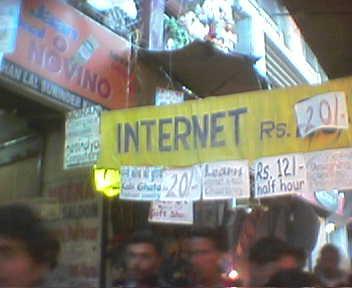About 60% of Indian users access their broadband internet in cyber cafés and SIFY has most of this market share. Lot of Indians have their first broad band experience in one of these cyber cafes which are very popular with the school and college kids.
Taking note of the SIFY Iway A franchised cyber cafes chain ( India ), esti market share less than 3% :
They have computers which are stripped down Microsoft Windows with absolutely minimal storage options. Once the user logs out of the computer all the files created during the session are deleted, so the only option is saving the files as an attachment in an email message. Besides local storage doesn’t make sense, since it’s a shared PC and users might end up using a different PC during the next visit to the cyber café.
These computers have the mandatory Microsoft Office which is used mainly for editing or updating resumes. These machines are strictly meant for browsing, but lack of choice in terms of operating system limits them to using Microsoft Windows.
Companies like Google, Yahoo which are putting together the components for a WebOS, should take a closer look at iWays, since webOS has better chance of getting accepted in this model. If Google were to launch a Gdrive, online storage of bookmarks, Word Processor, Spread Sheet etc which could be delivered over the web
Cyber cafes hardly need harddisk space . The excess space is a menace. Good synery but I think we will have to wait until broadband is firmly- consistent & dependable conectivity is established in conutries like India

1 comment:
in the cheaper cybercafes where you have a large number of machines sharing a residential quality internet connection web based experiences can be very bad.
traditional (old school) client server systems often dealt with these kinds of issues by having a very thin client which relayed much of the work to a server for additional asynchronous processing.
in this way with mail for instance
you can compose and send emails without waiting for page graphics to get loaded from california all the time.
there's alittle bit of software that needs to be developed for web based services to operate in these kinds of environments, but once done, its free for everyone.
Post a Comment